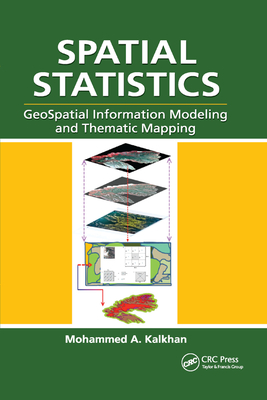Spatial Statistics: Geospatial Information Modeling and Thematic Mapping
Kalkhan, Mohammed A.
- 出版商: CRC
- 出版日期: 2020-09-30
- 售價: $2,280
- 貴賓價: 9.5 折 $2,166
- 語言: 英文
- 頁數: 184
- 裝訂: Quality Paper - also called trade paper
- ISBN: 0367865629
- ISBN-13: 9780367865627
-
相關分類:
機率統計學 Probability-and-statistics
海外代購書籍(需單獨結帳)
相關主題
商品描述
Geospatial information modeling and mapping has become an important tool for the investigation and management of natural resources at the landscape scale. Spatial Statistics: GeoSpatial Information Modeling and Thematic Mapping reviews the types and applications of geospatial information data, such as remote sensing, geographic information systems (GIS), and GPS as well as their integration into landscape-scale geospatial statistical models and maps.
The book explores how to extract information from remotely sensed imagery, GIS, and GPS, and how to combine this with field data--vegetation, soil, and environmental--to produce a spatial model that can be reconstructed and displayed using GIS software. Readers learn the requirements and limitations of each geospatial modeling and mapping tool. Case studies with real-life examples illustrate important applications of the models.
Topics covered in this book include:
- An overview of the geospatial information sciences and technology and spatial statistics
- Sampling methods and applications, including probability sampling and nonrandom sampling, and issues to consider in sampling and plot design
- Fine and coarse scale variability
- Spatial sampling schemes and spatial pattern
- Linear and spatial correlation statistics, including Moran's I, Geary's C, cross-correlation statistics, and inverse distance weighting
- Geospatial statistics analysis using stepwise regression, ordinary least squares (OLS), variogram, kriging, spatial auto-regression, binary classification trees, cokriging, and geospatial models for presence and absence data
- How to use R statistical software to work on statistical analyses and case studies, and to develop a geospatial statistical model
作者簡介
Dr. Mohammed A. Kalkhan has over 20 years experience in research and teaching at Colorado State University in Fort Collins, Colorado. As a member of the Natural Resource Ecology Laboratory (NREL) there, he has also served as an affiliate faculty in the Department of Forest, Rangeland, and Watershed Stewardship, and as an advisor for the Interdisciplinary Graduate Certificate in Geospatial Science, Graduate Degree Program in Ecology (GDPE), The School of Global Environmental Sustainability (SOGES), and Department of Earth Resources (currently the Department of Geosciences) at Colorado State University (CSU).
Dr. Kalkhan received his BSc in Forestry (1973) and MSc in Forest Mensuration (1980) from the College of Agriculture and Forestry, the University of Mosul, Iraq. He received his PhD in forest biometrics- remote sensing applications from the Department of Forest Sciences at Colorado State University, USA, in 1994. From 1975 to 1982, he was a lecturer in the Department of Forestry, College of Agriculture and Forestry, University of Mosul. In 1994, he joined the Natural Resource Ecology Laboratory.
Dr. Kalkhan's main interests are in the integration of field data, remote sensing, and GIS with geospatial statistics to understand landscape parameters through the use of a complex model with thematic mapping approaches, including sampling methods and designs, biometrics, determination of uncertainty and mapping accuracy assessment.











